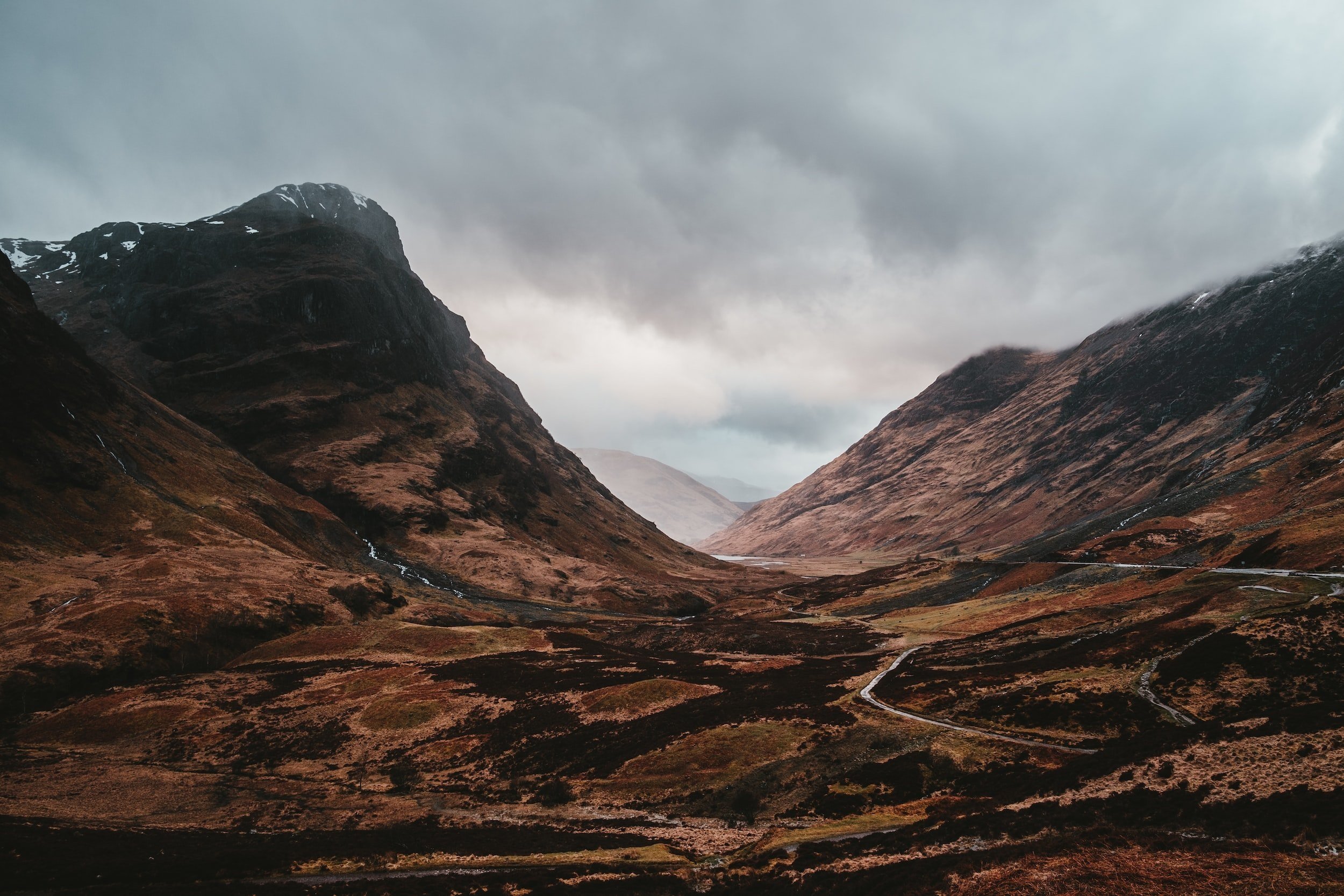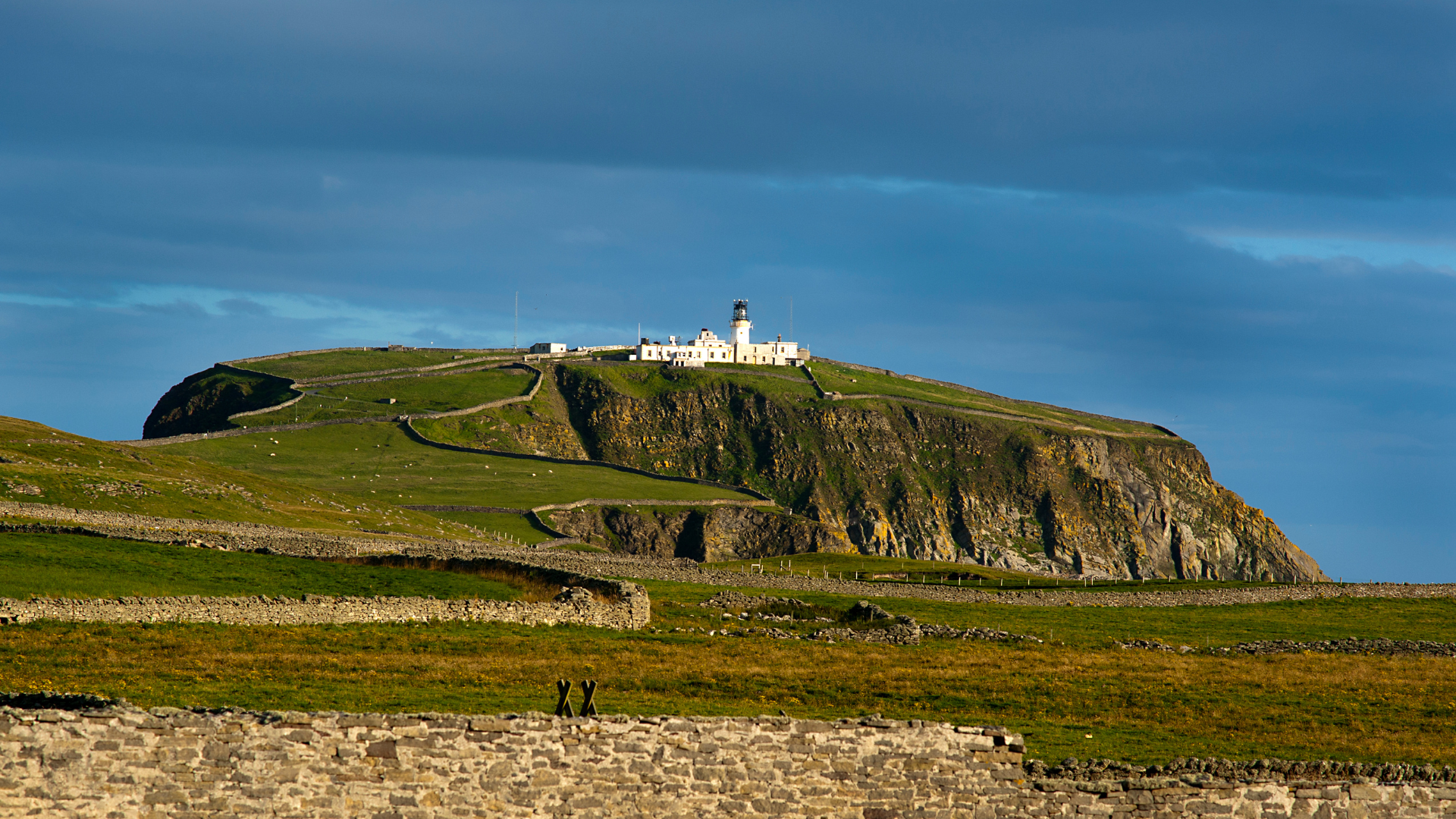6 Best Overcast Views Scotland
This isn’t an exhaustive list and should be used as more of a starting place…
We get it! There's nothing quite like admiring a new landscape amidst the fleeting embrace of golden hour. If you've spent any time in Scotland, you get accustomed to the beauty of the dark, melodramatic scenery (and weather). Here are a few places that you can visit, sun or clouds, and still be moved by the beauty that is the Scottish landscape.
GLENFINNAN VIADUCT
The famous Jacobite steam train uses this amazing structure to transport passengers to and from the old station in Fort William on a return rail journey that is one of the most scenic in the world.The photogenic old world bridge is very accessible, just off a scattered main road making it a simple and worthwhile stop for those searching for Scotland's best viewing points.
The famous Glenfinnan viaduct carries the railway to Glenfinnan Station across a 1,000 ft span, 100 ft above the ground. Glenfinnan perfectly encapsulates the Scottish highlands in the prosperous industrial age. The epic landmark experiences thousands of visitors around the world. However there are ways to marvel at the stunning scenery and special atmosphere without a crowd by utilizing the right local guides.
This bridge may look familiar to you if you have come across the Harry Potter film series, it is the filming of the second and third Harry Potter instalments. Making it a must see for Harry Potter lovers that wish to see the very track that carries The Hogwarts Express! In August every year, on the Saturday closest to 19 August, the Glenfinnan Gathering and Games take place.
2. BEALACH NA BÀ, Highlands
Arguably one of the most iconic roads in the UK is that of the Bealach na Bà, which means ‘Pass of the Cattle’ in Gaelic. Located in the Highlands, it is the third highest road in Scotland and makes any list for most beautiful drives in the world. Due to its ‘single track’ nature, it wouldn’t exactly make it on the list of ‘safest drives’, and for this reason we strongly recommend a private driver guide.
Boasting breathtaking panoramic views from the top, untamed wilderness, and mountains steeped in clouds, this is the UK’s closest thing to an alpine pass. This road links Loch Kishorn to the secluded village of Applecross. From the top if you look west you can see the renowned Isle of Skye and the Hebridean islands.
If you are traveling in the-off season (September- April) please note that the Pass can be closed due to snowfall. It isn’t uncommon for the Pass to be blocked off for well over a month during stretches of the winter.
Back in 2019 I embarked on a self-guided car trip in Ireland on roads very similar and the happenings of this were not pretty. I totalled a rental car and was stranded in the city of Letterkenny for a night, which under different circumstances would have been enjoyable. The private driver guides are worth it! Trust me. Peace of mind is priceless when traveling on roads like this
3. EILEAN DONAN CASTLE
Those from Scotland will recognize the Eilean Donan castle due to the fact that it probably appears on more shortbread tins and calendars than any other. This castle is yet another staple in the laundry list of places to visit in the Scottish Highlands.
It’s no surprise that it garners so much attention. Secluded on its own island, it is stationed at the intersection of three tidal lochs looking out at the Isle of Skye. Some might even recognize it from the 1999 James Bond Film, “The World is not Enough”.
While there is much speculation on the foundations of the castle, it was likely erected in 1200 to defend the lands of Kintail from viking invaders (a history lesson for another day). The castle we see today was built in the 1920’s/30’s amongst the ruins of the original.
Surrounded by the ethereal, wooded splendor of Kintail, Eilean Donan is a magnificent sight to behold. Not even clouds can mask its ancient, prevailing glory.
4. SUMBURGH HEAD, SHETLAND
Built in 1821, Sumburgh Lighthouse is the oldest lighthouse in Shetland, and perhaps the most well known. Jutting out from the Sumburgh Head Cliffs at the southernmost part of Shetland is the Sumburgh Lighthouse. It can be seen from miles away (on land or on sea) thanks to its strategic positioning on the cliffs.
There is a simple airport nearby which makes it a spectacular getaway for those looking for something a bit more ‘remote’. It takes around an hour and a half to get there via plane from Edinburgh or you can take a ferry from mainland Scotland. This will take anywhere from 7-12 hours.
The area surrounding it is RSPB nature reserve which lends itself to those looking for stunning views and to experience the many varieties of cliff residing sea birds. It’s also near the archaeological sites of Old Scatness and Jarshof which makes it an exceptional place for history buffs.
If you’re really looking to immerse yourself in the Shetlands we recommend staying at the property connected to the lighthouse. The accommodations are well balanced between old-style Lighthouse Keepers Cottage and the luxury associated with contemporary amenities. The property sleeps five guests in three bedrooms. There is a comfortable lounge room and a spacious kitchen diner with electric Aga cooker and separate gas hob. The fully equipped utility room includes a washer and dryer.
Sumburgh Head Lighthouse, Visitor Centre and Nature Reserve is temporarily closed and is looking to reopen in April 2023.
5. Dunnottar Castle
“Once seen, never forgotten…”
Dunnottar is much more than just a topographical curiosity. This rock and the magnificent buildings on it have borne witness to much of the rich and tragic tapestry of Scotland's history.
Dun is the Pictish word meaning 'place of strength'. The word Dunnottar, originally 'Dun Fother' probably meant 'Fort in the low country' as the Castle lies in the Mearns, the lands to the east of the Grampian Highlands between Montrose and Stonehaven.
For over 1000 years Dunnottar Castle played a crucial role in Scottish history and holds many rich secrets of Scotland’s colorful past. The Castle has played host to some of the nation's greatest historical figures including William Wallace and Mary Queen of Scots and is famous for its role in saving the Honors of Scotland (the Scottish Crown Jewels) from Oliver Cromwell's army in the 1650s.
Steeped in history, this romantic and haunting ruin is a photographer’s paradise, a history lover’s dream and an iconic tourist destination for visitors the world over.
NOTE, that this site is extremely weather dependent thanks to its coastal establishment so if you plan on visiting make sure to check the weather forecast.
6. Fingals Cave
Fingal’s Cave was created some 60 million years ago by the very same ancient lava flow that created the Giant’s Causeway in Ireland, which is directly across the sea. As both are made of the same basalt columns, legend holds that they were the end pieces of a huge road built by the Irish giant Fionn mac Cumhaill, so he could make it to Scotland where he was to duel with Fingal, his gigantic rival.
Situated on the uninhabited island of Staffa in the Inner Hebrides, Argyll, Fingal’s Cave is the kind of place that looks like something out of a dream. Looming 227 ft (69 metres) tall over the ocean, this visually astounding geometric sea cave looks like a contemporary masterpiece displayed in the Museum of Modern Art. It has been formed completely from hexagonal columns of basalt, shaped in neat six-sided pillars that make up its interior walls. Many who witness the columns in person insist that they must be man-made. On the contrary, they are completely a gift from nature.
Thanks to the naturally formed arched roof, the echo generated by the smashing ocean waves sings in hypnotic melodic keys. These spine-shivering harmonies are often likened to the sounds heard resonating throughout a cathedral. It must be observed (and heard!) in person to appreciate the uniqueness of this experience!
Follow in the footsteps of Queen Victoria and Sir Walter Scott, amongst others, and take a cruise boat to Staffa and the breathtaking Fingal's Cave, where you can enjoy puffin spotting in summer, and listen to the astonishing acoustics of the cave, which inspired Mendelssohn to compose his Hebrides Overture.
NOTE, this experience is weather dependent. Make sure you are taking that into consideration when planning.







